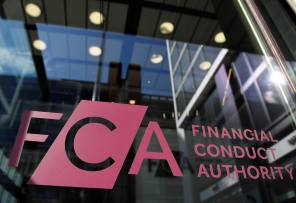
Article 4 / 4
Guide to buying and selling a firm in 2017What might drive adviser activity in 2018

Price has always been a key factor in selling a firm. An adviser retiring and wishing to live off the proceeds will of course want the best possible multiples.
There were high multiples on offer immediately after the retail distribution review came into force in 2012 - some even up to 12x renewal - and headlines at that time suggested these might not be around for long, especially with the death of trail commission.
However, according to Henry Blunt, managing director of Retiring IFA, multiples of earnings before interest, tax, depreciation and amortisation (Ebidta) are still strong - up to 12 times in some cases and up to four times recurring income.
He avers: “Multiples are definitely not coming down. If anything, for a business interested in finding the opportunity for the right price, they are increasing.”
Mr Blunt says where some price pressure has appeared, this is where there have been serious underlying reasons.
For example, he says: “Businesses selling due to a regulatory reason will experience lower prices.”
Keith Richards, chief executive of the Personal Finance Society (PFS), outlines what sort of calculations might be applied when valuing a company.
He says: "A normal range for transactions could be set at 12 to 14 times earnings before interest, tax, depreciation and amortisation (Ebidta). A multiple of approximately 8x can be considered a very broad average for public companies in some industries.
"For private companies, it will almost certainly be lower, often closer to around 4x. IFAs, meanwhile, will typically be valued on their recurring income, which is between 2.5 and 4x the annual amount.
"In recent years, acquirers have become more sophisticated in the way they calculate value. They are examining closely not only profit and loss, but also the risks associated with the business, how many advisers they have and the age of their client base."
So the actual price may depend on a lot more than a simple multiple.
Mr Richards adds there is also a growing emphasis on the level of recurring fee income received, which puts the onus on the seller to make sure their profits are as rosy as possible.
He says: "The most lucrative strategies expect to see a firm where at least 50 per cent of turnover includes annual recurring income."
According to the PFS, some acquired businesses will typically receive a multiplier of known recurring income between 2.5 and 3.5, while bought-out owners could also receive introduction fees of 20 per cent.
But the most common deal is a 'clean break', where sellers get 50 per cent payment of goodwill upfront, usually three or four times recurring income, with the remainder paid over a 24-month term.
Other elements
But while looking for the best possible price, an adviser must not forget the quality of the buyer and the culture of the new firm has to be right: the clients need to be looked after well, not dumped on any old bidder.
Lawrence Cook, director of marketing and business development at Thesis Asset Management, explains: “Many firms we speak to who are selling are concerned about the culture of the new firm. ‘Will they look after my clients?’
“Advisers will have spent many years advising clients and sometimes more than one generation of the same family.
“Once they have sold their business they are still living in their local community and want to know they have handed over client care to a firm that has a similar ethos.”
Indeed, as Mark Stokes, proposition and marketing director for Succession, and formerly the managing director of Chambers Group, says: "The price is not as important as the proposition and infrastructure."
So price is not the be-all and end-all.
Don’t undervalue your firm
On the other hand, some advisers underestimate the worth or value of their firm, perhaps because they wish to make a quick sale, they are underappreciating the inherent value and the goodwill attached to their business.
Barry Neilson, business development manager for Nucleus, stresses: “It is vitally important that the seller assesses their own financial position before engaging in any activity that relates to their exit.”
He says any adviser wishing to sell “must understand the minimum sum they need to achieve the same financial independence they have been helping their clients realise over the years.
“Many adviser owners seem to be willing to consider compromising on price to secure an exit that offers the highest level of continuity for clients and staff.”
But getting the very highest possible price could become harder to achieve in the future.
John Joe McGinley, founder of Glassagh Consulting, comments: “The elephant in the room is the FCA musings on trail in the Asset Management Market Study.
“While this looked at the asset management sector, advisers must be aware it will have major implications for their profession, particularly when it comes to remuneration – an attractive element of the embedded value of a business.
“This could have a big impact on adviser sale values.”
So why sell?
According to Mr McGinley, the top reason for selling is “the exit strategy as advisers reach an age at which they wish to retire”.
Mr Blunt adds: “The main reason seems to be a lack of succession planning from an aging population of IFAs.”
James Dingwall, chief executive of Thistle Initiatives, says: "Top reasons for selling are the same as always: you have more or less hit your peak, someone is giving you a good value and it is the right time in your life."
But there is also regulation. Mr Dingwall comments: "Regulation is getting harder for small firms and the larger consolidators have spent significant amounts of money on compliance, so they are generally in a good place to cope with regulatory change."
Vision
And there will always be a need for strategic acquisitions, either for large firms, networks, consolidators and life offices to gain distribution, or for smaller firms to cement themselves locally or regionally.
The table (below) from Imas Corporate Finance shows the number of deals over the past year from June 2016 to June 2017, as well as the amount of money involved.
It is clear the majority of deals made were below £100m, but there were some big-ticket acquisitions in the last quarter of 2016 and the first quarter of 2017.
| BandingValue | Q2 2016 | Q3 2016 | Q4 2016 | Q1 2017 | Q2 2017 |
| £5 - 25m | 4 | 1 | 1 | 1 | 1 |
| £25 - 100m | 2 | 0 | 3 | 0 | 1 |
| £100m + | 0 | 0 | 3 | 2 | 0 |
Whatever the route advisers choose to fulfill their vision - whether to sell to a big corporation, a consolidator or to a small, local trade buyer, it should depend on the "ongoing financial wellbeing of the client", says Tom Hegarty, managing director of the New Model Business Academy.
Mr Hegarty adds: "Effectively, there are three options available to advisers wishing to sell". These are:
- Consolidation with a large firm. "Big firms looking to buy smaller advisory firms may offer the best financial deals but due to the high number of clients they are likely to service, many advisers might feel uneasy with guaranteeing the same quality of service for their clients."
- Consolidation with a smaller firm. "While a sale to a smaller firm may achieve the ongoing personal service with which the retiring adviser feels comfortable, the financial offer is likely to be less attractive."
- Succession planning. "This might take a longer time to implement fully, but bringing an adviser into the firm of the retiring adviser means a financial plan can be put in place with which both parties are satisfied. Although it is not suited to advisers looking for a quick exit from the sector, it does tick all the boxes for those happy with a long-term plan."
Law, change and Brexit
There may be a downturn in activity come 2018, with the added economic uncertainty a messy departure from the European Union might bring.
According to Mr Blunt: “I would suggest that Mifid II has seen a few businesses pushed towards selling.”
This could have a negative effect on merger and acquisitions in the financial services marketplace, although currently the appetite is still very much there.
Matthew Meadows, corporate finance partner with Kingston Smith, agrees: "Mifid II has prompted some firms to review their strategic direction, which may naturally lead to thoughts of an exit, divestment or expansion."
However, many buyers are continuing to make funds available for acquisitions in order to drive growth, according to Linda Whittle, senior associate at Fladgate.
Moreover, she points to various changes in legislation which have helped to boost acquisitions.
“Tax changes made last year in the Finance Act 2016, for example, to Entrepreneurs’ Relief, which apply to long-term investors in unlisted trading companies, could be an incentive,” Ms Whittle says.
Mr Meadows also believes Brexit might motivate more advisers to sell: "In this current regulatory and Brexit environment, change brings opportunity."
Ms Whittle opines: “Of course, some sellers will wish to exit before the potential impact of Brexit becomes clear but others may see an opportunity to encourage non-European buyers to embed themselves in the market before the UK’s exit from the EU takes place.”
simoney.kyriakou@ft.com



